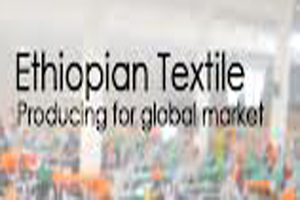
Ethiopian makes efforts to boost its clothing and textile sector
YarnsandFibers News Bureau 2014-03-07 16:45:00 – EthiopiaThe Ethiopian government is keen to boost its apparel manufacturing industry for which a target of US$1bn is set in textile exports by 2016. The country's efforts to build its textile and garment industry and offer competitive prices have attracted a growing number of new buyers in recent years.
Its clothing and textile sector is currently going through major expansion programme fuelled by foreign investment as companies seek to reduce their reliance on countries like China and Bangladesh.
The Ethiopian Investment Agency (EIA), is given the responsibility for issuing investment permits, work permits, trade registration certificates and business licenses. It also aims to encourage investment and promote the inflow of foreign capital and technology into Ethiopia.
Ethiopia is certainly on its way to becoming a major African apparel hub, taking advantage of its status under the Africa Growth and Opportunity Act (AGOA).
Also an increasing number of global retailers such as H&M, Tesco and Primark have begun sourcing clothing from sub-Saharan Africa. Swedish fashion giant H&M Hennes & Mauritz, in particular, has been open about the opportunities it sees for producing apparel in Ethiopia.
Another retailer, discount apparel group Primark, began sourcing from Ethiopia last year, while Tesco is currently making efforts to raise working conditions and ethical standards before it begins sourcing garments from the Horn of Africa country.
Currently, Ethiopia managed to increase exports by over 50% between 2010 and 2012. The US now accounts for around 40% of Ethiopia's total textile and garment exports, due to the AGOA trading agreement set up in 2000, while the EU takes almost the remaining 60%.In addition to the EU and the US, however, around 3% of Ethiopia's exports go to Sudan and a small percentage to other countries in the region. There is a developing trend of textile exports going to Turkey, China and India.
Although the figures look good there is much more work to be done if Ethiopia is to achieve the status of China and Bangladesh as a major sourcing destination. The market access to the EU could further improve in favour of Ethiopia with the new GSP in place.
Currently, textile and clothing manufacturing industry in Ethiopia has to import cotton and raw materials from China, India and other countries as the existing production of cotton is not sufficient to meet the growing textile and clothing sector requirement. In order to keep up with and encourage demand, Ethiopia's Government is working to increase the volume of cotton produced in the country. At the present only around 30-40,000 are being used time while around 3m hectares are available for cotton farming in Ethiopia, so the potential to produce more cotton is substantial.
Currently, there are 60 garment factories and 15 textile mills operating in the country.
Market Intelligence
Ask for free sample Report

experience
Customer Base
dedicated team
Countries Served Worldwide




![Freitag unveils new Mono[P6] circular backpack](https://www.yarnsandfibers.com/wp-content/uploads/2024/04/Freitag.jpg)




